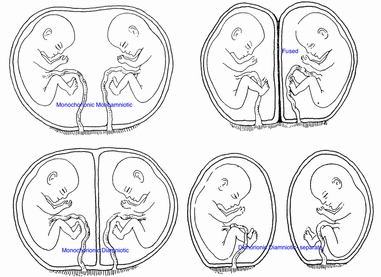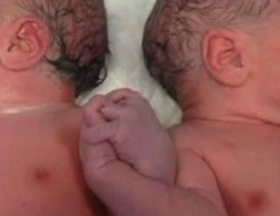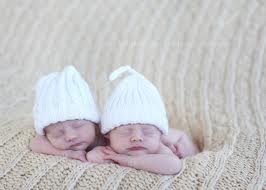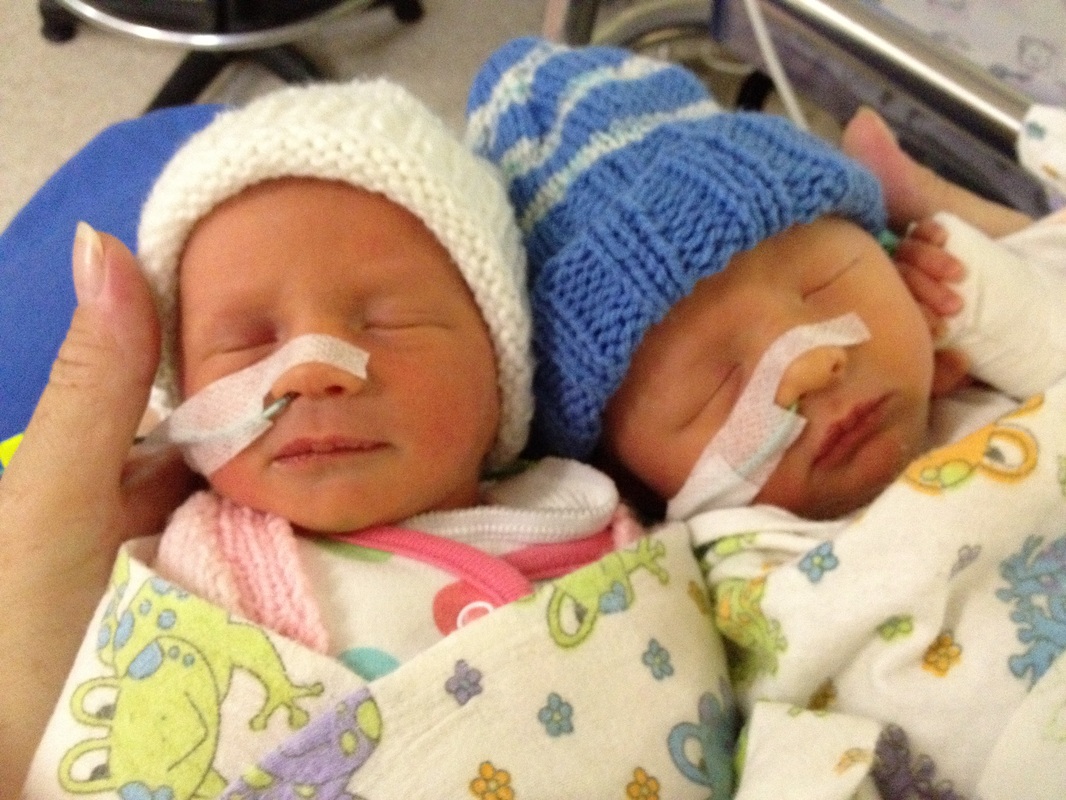Multiple births are more common these days due to more couples/ singles starting families later in life and the use of Assisted Reproductive Techniques (ART), particularly with the use of fertility drugs. Twins are the most common of these. There are 2 types of twins ~ Monozygotic (identical) & Dizygotic (fraternal), the latter being more common. For some, the news of expecting more than 1 baby can be greatly overwhelming. For others it may be wonderful news with the prospect of having a little family all in one or a sibling for their baby straight up.
Monochorionic Monoamniotic (MCMA) twins have no separating membrane. They share a placenta and share an amniotic sac. Monochorionic Diamniotic (MCDA) twins share a placenta but have a separating membrane of amnion. Dichorionic Diamniotic (DCDA) twins have a separating membrane consisting of both chorion & amnion. They may or may not have separate (or fused) placentae.
Please refer to diagram below.
Monochorionic Monoamniotic (MCMA) twins have no separating membrane. They share a placenta and share an amniotic sac. Monochorionic Diamniotic (MCDA) twins share a placenta but have a separating membrane of amnion. Dichorionic Diamniotic (DCDA) twins have a separating membrane consisting of both chorion & amnion. They may or may not have separate (or fused) placentae.
Please refer to diagram below.
|
Factors Increasing The Odds For Having Twins: ~ Advancing age of the mother ~ A large number of previous pregnancies ~ Heredity ~ Race ~ Assisted Reproductive Techniques |
Conditions More Common In Multiple Pregnancies: ~ Miscarriage ~ Post Partum Haemorrhage ~ Anaemia ~ Obstetric Cholestasis ~ Pre-eclampsia ~ Gestational Diabetes ~ Cord Prolapse |
Are Pregnancy Symptoms Worse With Twins?
Twin pregnancies or multiples are associated with a higher frequency and severity of discomforting maternal conditions. Not everyone will experience the same symptoms when pregnant with twins/ multiples, however, there are higher levels of the pregnancy hormone HCG (Human Chorionic Gonadotrophin), which triggers morning sickness, so you may experience more nausea and vomiting.
Other symptoms may include, increased shortness of breath (SOB) due to higher levels of the hormone progesterone in early pregnancy. Your SOB may increase later in the pregnancy due to having 2 babies pushing up on the diaphragm.
Back pain can be a problem in later pregnancy due to additional weight you are carrying and therefore the strain on muscles.
Anaemia is more common with twins or multiples causing tiredness. Your blood volume increases in pregnancy but even more so with twins. Due to this the blood becomes more diluted with fewer red blood cells. Red blood cells carry oxygen around the body and when in short supply, can cause shortness of breath.
Twin pregnancies or multiples are associated with a higher frequency and severity of discomforting maternal conditions. Not everyone will experience the same symptoms when pregnant with twins/ multiples, however, there are higher levels of the pregnancy hormone HCG (Human Chorionic Gonadotrophin), which triggers morning sickness, so you may experience more nausea and vomiting.
Other symptoms may include, increased shortness of breath (SOB) due to higher levels of the hormone progesterone in early pregnancy. Your SOB may increase later in the pregnancy due to having 2 babies pushing up on the diaphragm.
Back pain can be a problem in later pregnancy due to additional weight you are carrying and therefore the strain on muscles.
Anaemia is more common with twins or multiples causing tiredness. Your blood volume increases in pregnancy but even more so with twins. Due to this the blood becomes more diluted with fewer red blood cells. Red blood cells carry oxygen around the body and when in short supply, can cause shortness of breath.
Vanishing Twin Syndrome
Vanishing Twin Syndrome is a phenomenon, 1st recognised in 1945, where there is a loss (disappearance) of one twin during pregnancy (more often than not in the 1st trimester & therefore often before the mother even knows she is carrying twins). This diagnosis was generally detected under examination of the placenta post delivery but now, with the use of ultrasound technology early in pregnancy, the presence of twins/ multiples can be detected in the 1st trimester and so it is in a follow up ultrasound, that the disappearance of a twin may be detected. The tissue of the miscarried twin if in 1st trimester, is usually reabsorbed by either the mother, remaining twin or placenta.
The cause of Vanishing Twin Syndrome is unknown but abnormalities resulting in the vanishing twin, seem to be apparent early in development. Inspection of the placenta may show chromosomal abnormalities. Another possible cause is the improper implantation of the cord. If the disappearance is within the 1st trimester, studies indicate that there doesn't seem to be any long-term detriment to the surviving twin or the mother but of course, this is dependent upon the cause of death of the other twin. If the loss is in the 2nd or 3rd trimester, there is an increased risk to the surviving twin including, a higher rate of Cerebral Palsy.
Those at risk for Vanishing Twin Syndrome are women over 30years of age, which makes sense given that advancing age increases rates of multiple pregnancies and fertility treatments. Often there are no symptoms at all but some women experience symptoms similar to miscarriage ie, mild cramping, bleeding or pelvic pain. Blood tests also may detect falling hormone levels indicating loss of a foetus.
|
|
|
|
Disclaimer:
This is an information website only, based on my experiences and information I have obtained through my own readings, discussions and related to topics of interest to me. For further information, I suggest you do your own research. There are differing opinions on some topics so some websites may give conflicting information and currency of information may change over time. For medical advice, I suggest you contact your healthcare provider.
This is an information website only, based on my experiences and information I have obtained through my own readings, discussions and related to topics of interest to me. For further information, I suggest you do your own research. There are differing opinions on some topics so some websites may give conflicting information and currency of information may change over time. For medical advice, I suggest you contact your healthcare provider.













